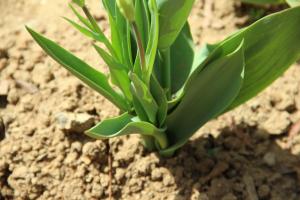What are Water Wise Plants?
Water is a precious resource that should be conserved wherever possible. One way to reduce our water usage is to plant water wise plants in our gardens and landscapes. These plants have a variety of adaptations that allow them to thrive with less water, making them ideal for drier climates or areas with water restrictions. Let’s explore some common characteristics of water wise plants.
Low Water Needs
One of the defining features of water wise plants is their low water needs. They have evolved to survive in environments where water is scarce or irregular, so they are equipped to handle periods of drought. Some water wise plants can get by with only occasional watering, while others can survive without any supplemental irrigation once established. This makes them a great choice for areas where water is expensive, limited, or needs to be conserved for other uses.
Deep Roots
Another adaptation of water wise plants is their ability to grow deep roots. These roots are able to access water sources that other plants cannot, allowing them to thrive in areas with little rainfall or limited watering. Deep roots also help water wise plants to tolerate high temperatures and prevent soil erosion, making them a great choice for slopes and hillsides.
Drought-Tolerant Features
Water wise plants have a variety of features that allow them to tolerate drought conditions. Some of these features include succulent leaves that store water, small leaves that reduce water loss through transpiration, and thick waxy coatings that prevent evaporation. Other water wise plants have adapted to sandy or rocky soils, which typically do not retain water well. These adaptations allow water wise plants to conserve the water they do receive and use it efficiently.
Native Species
Planting native species is an excellent way to conserve water in your garden or landscape. Native plants have evolved to thrive in their local climate and soil conditions, making them well-adapted to the available water. They also have a natural resistance to pests and diseases, reducing the need for harmful pesticides and herbicides. By choosing native species, you can create a beautiful and low-maintenance landscape that helps conserve water.
Conclusion
Water wise plants are a great choice for anyone who wants to conserve water and create a low-maintenance landscape. They have a variety of adaptations that allow them to thrive with less water, including low water needs, deep roots, drought-tolerant features, and native species. By incorporating water wise plants into your garden or landscape, you can reduce your water usage, lower your water bill, and help protect this precious resource for future generations.

 how many times do yo...
how many times do yo... how many planted tre...
how many planted tre... how many pine trees ...
how many pine trees ... how many pecan trees...
how many pecan trees... how many plants comp...
how many plants comp... how many plants can ...
how many plants can ... how many plants and ...
how many plants and ... how many pepper plan...
how many pepper plan...






























